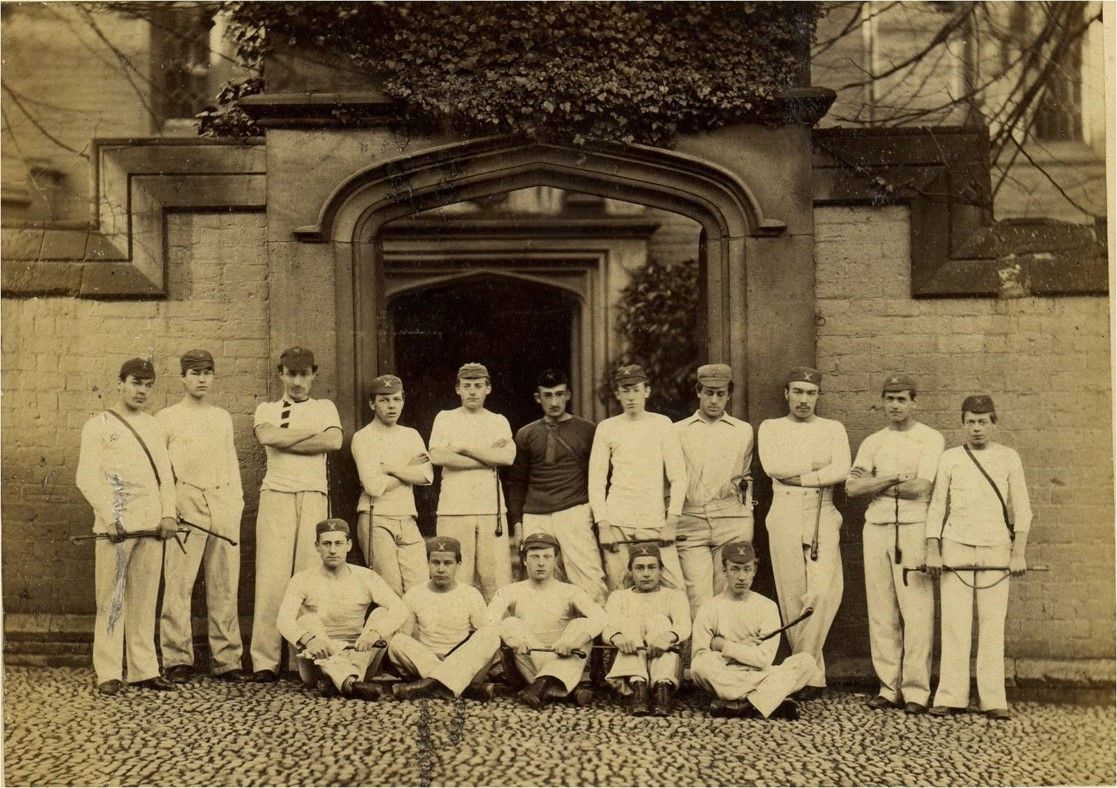
1831 – the Royal Shrewsbury School Hunt

The Royal Shrewsbury School Hunt is the oldest cross-country running club in the world.
It is widely regarded as having laid the foundation stones from which the sport grew. Written records date from 1831, but the origins of organised cross-country running at the School can be traced back to 1819.
The sport began when a group of pupils petitioned the Headmaster, Dr Butler, to allow them to form a foxhunting club. Unsurprisingly, their request was refused. But they decided instead to form a club based on the same principles as foxhunting and using much of the same terminology, but with boys taking the place of ‘hounds’, running in ‘packs’.
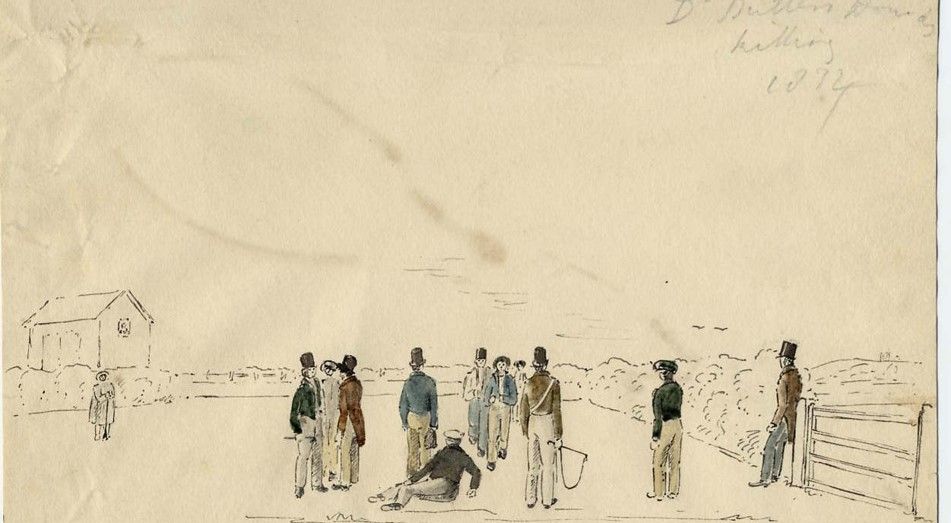
Photo: Dryden watercolour
This is the earliest illustration of organised running known to exist: a watercolour sketch by Sir Henry Dryden of Shrewsbury School Hunt runners, painted in 1834. The Huntsman carries his ceremonial whip.
The ‘huntsman’, wearing a black cap and red jersey and carrying a whip and hunting horn – all of which remain the traditional garb of today’s Huntsman and Huntswoman (Captains of Cross-country) – would lay a trail of torn-up bits of paper as a ‘scent’ (said to be torn-up pages of Kennedy’s Latin Primer) which the ‘hounds’ would follow over stiles, through streams and up and down hills.
The runs included a fixed number of ‘all-ups’ – usually about four – when the whole pack would wait for stragglers before setting off again. The only actual race was the ‘run-in’, after the last all-up, which was started by the Huntsman declaring “All hounds who wish to run, run hard, run well, and may the devil take the hindmost!”. The first person to reach the finish was said to have ‘killed’.
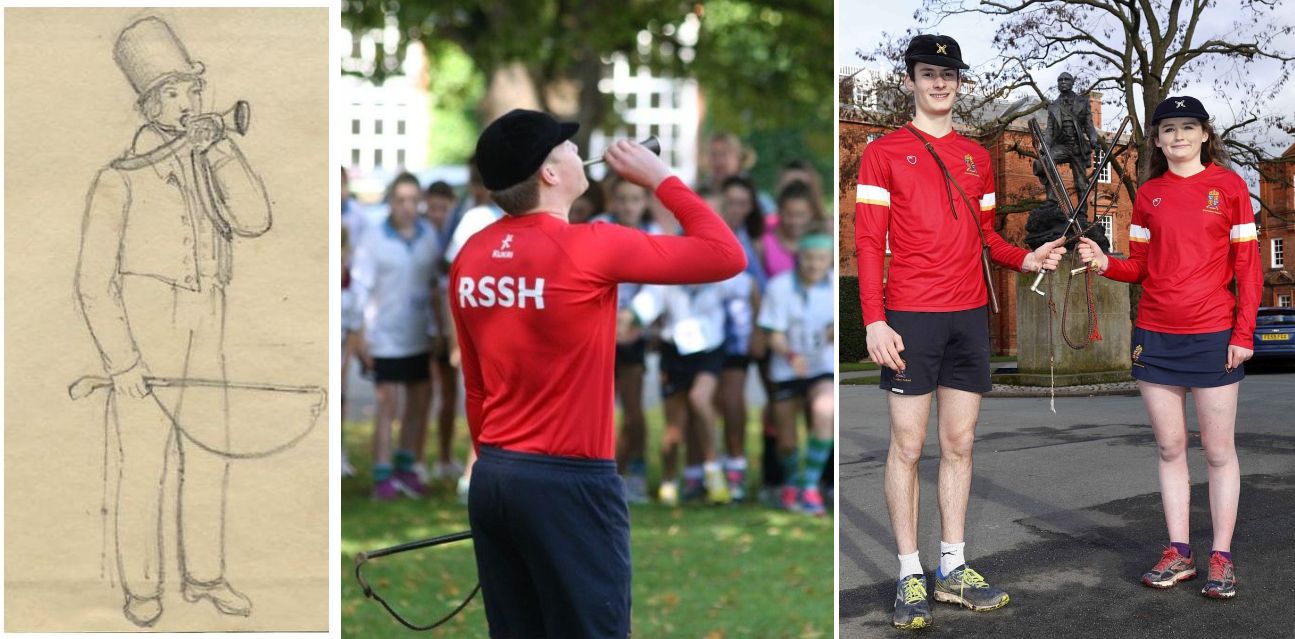
Photo: Huntsmen then and now
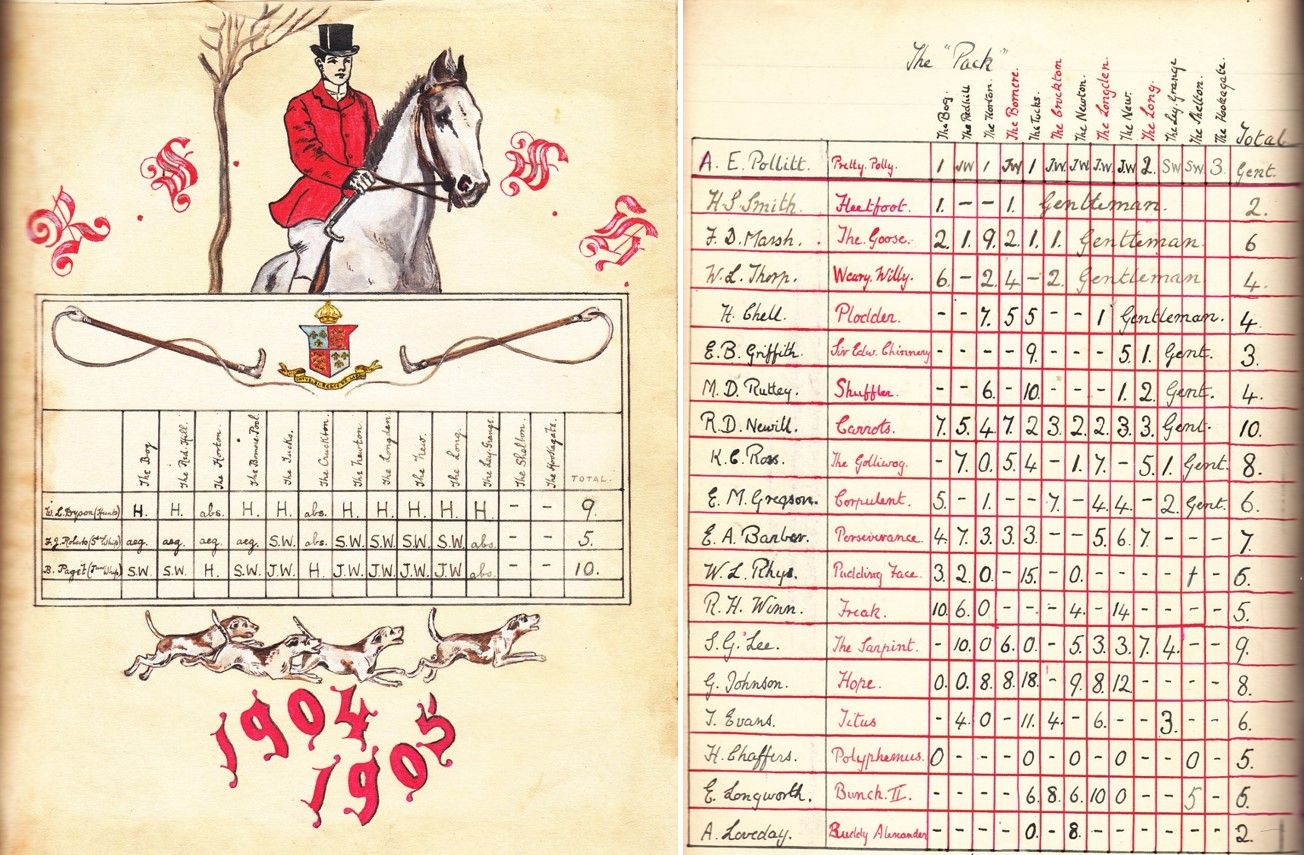
Photo: Hound book
An example of a ‘Hound Book’ from 1904/1905. This is kept by the Huntsman as a record of the runs, including a list of runners and their nicknames (some of them not particularly flattering or politically correct!)
Cross-country runs soon came to form a series of more or less standardised courses, so the paper ‘scent’ was no longer needed – although the tradition continues, in name at least, in the ‘Paperchases’ race that is still run every year. ‘Paperchases’ have nevertheless continued…..
The original Hunt runs were rowdy affairs, attracting renegades keen to escape the confines of the School buildings and academia. Discipline was lax, and many of the traditional running routes passed local hostelries, where hounds would call in to refuel on beer.
Dr Kennedy, Headmaster from 1836-66, was strongly opposed to the Hunt – as were a number of local farmers. Ultimately he was persuaded by the praepostors (prefects) in 1856 to ‘tolerate’ the runs on certain conditions: namely that they did not cross the river; that the number of runs was limited; and that no boy should run if he were not considered physically fit. An additional stipulation was that the ‘hounds’ dinner’ should be held at a confectioner’s shop, not an inn.

Photo: 1872 Hunt squad
The 1872 Hunt squad. The Huntsman stands in the centre in the darker jersey (it would have been red, as it remains today). He wears the black velvet cap still worn by the Huntsman, with his senior officers (known as the Senior Whip and Junior Whip) also carrying whips. ‘Gentlemen of the Runs’ (senior runners) carry batons with inscribed markings recording their successes in runs.
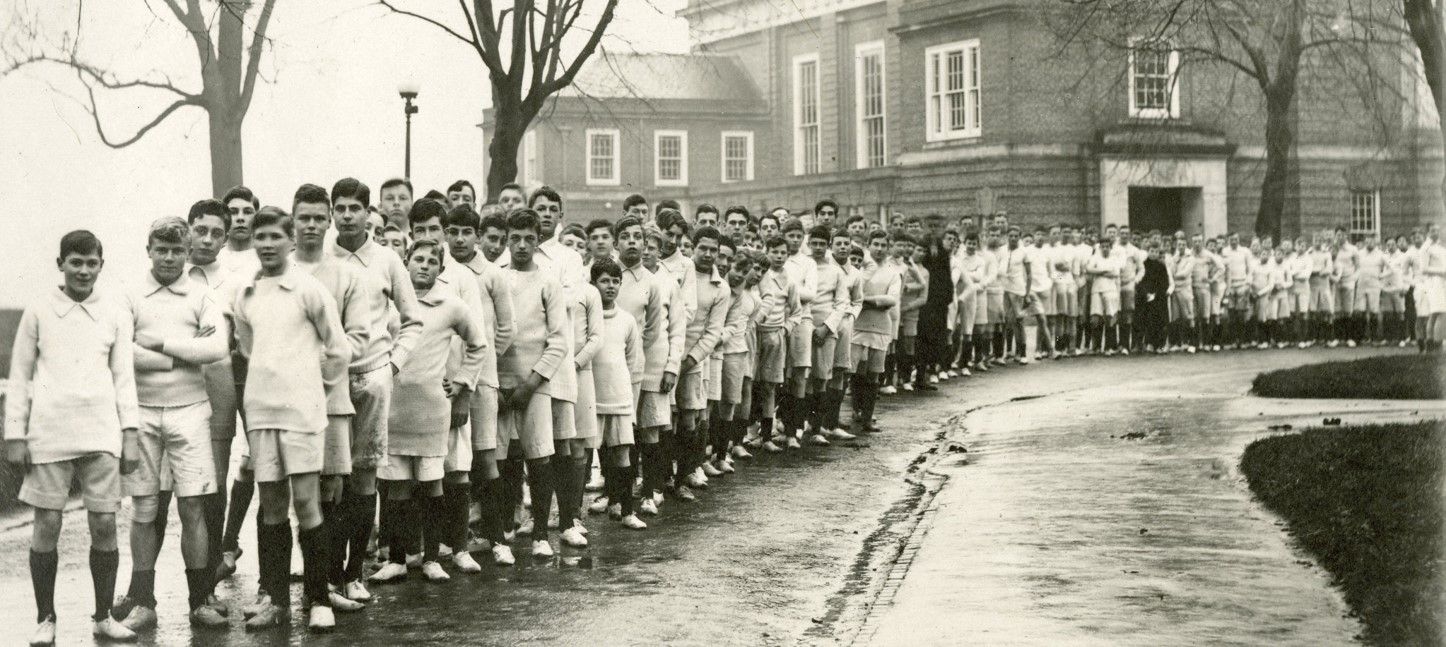
Photo: Tucks 1920
Since the early 1830s, Shrewsbury has held an annual whole-school cross-country race called ‘The Tucks’, named after Farmer Tucks, who owned much of the land where the race originally took place. It took place on the day of the Shrewsbury Races, in order to ensure that the boys were kept otherwise occupied.
This photo shows the School lined up outside the Alington Hall for the start of the 1920 race.
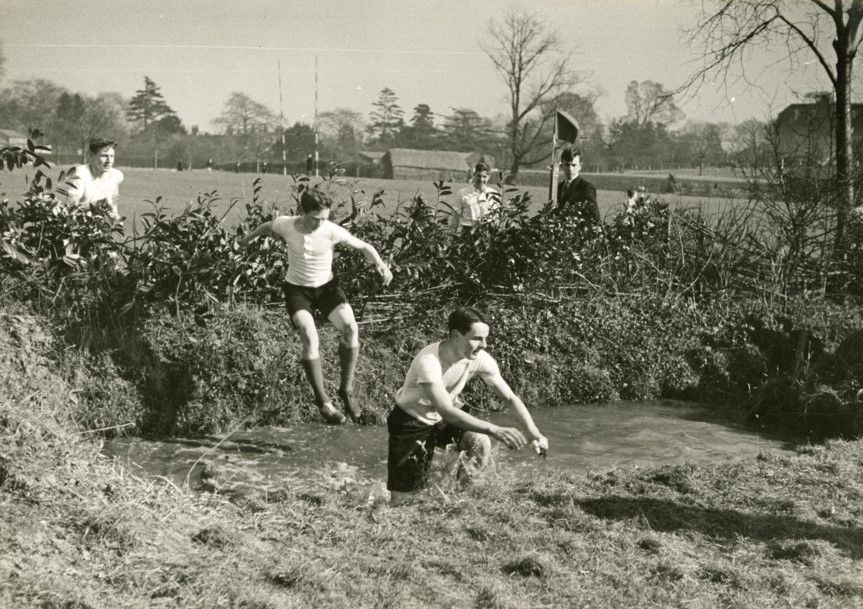
Photos: Steeplechases 1940s
Another major annual race that remains a key part of the Shrewsbury School running tradition is the Steeplechases. These have been run since 1834 and took their inspiration from late 18th century horseback steeplechase racing. Runners vaulted hedges (or forced their way through them) and crossed brooks, a sport that has since evolved into track steeplechase racing.

